- Home
- Larry McMurtry
The Colonel and Little Missie Page 10
The Colonel and Little Missie Read online
Page 10
The composer and diarist Ned Rorem remarks somewhere that all life is really Rashomon—a matter, that is, of individual point of view. Most of Bill Cody’s encounters with Indians demonstrate this quality. Cody wrote his autobiography, three years after his “duel,” to energize his theatrical career. Naturally he and his ghostwriter splashed in as much color as possible.
By his own account he and Yellow Hair were more than one hundred yards apart when the Cheyenne “sang out” his challenge. He would have had to sing it pretty loud for Cody to hear it—Cody, of course, did not speak Cheyenne nor Yellow Hair English. Besides, Yellow Hair knew that there was a large company of soldiers near at hand. It is extremely unlikely that he would have put himself in jeopardy to enjoy some kind of duel with Bill Cody, whom he may not even have recognized, despite the latter’s velvet suit.
I see no reason to doubt the sober testimony of the two signalmen, Madsen and Powers; both had a good view and neither had any axe to grind. Some discrepancies usually pop up in battle reports. Cody shot Yellow Hair in the leg yet the bullet hit his horse in the head, killing him. Some say both men’s first shot missed. The claim that Cody took advantage of a hill or rise to conceal himself makes sense. Cody had always been prudent. Yellow Hair may have slipped, for a time, into a shallow ravine. Each would have naturally used whatever topographical advantage they could find. That Cody, once unhorsed, went down on one knee and took deliberate aim is convincing—he often complained about the difficulty of making precise shots from moving horses. It was characteristic of him to shoot the horse first—he did this some half a dozen times. Certainly he was not fool enough to allow himself to be drawn into a knife fight, and of course he was aware that Yellow Hair had massive reinforcements at hand: the charging Cheyenne Clarence King was so impressed with.
Neither signalman mentions Cody stabbing the Indian—merely scalping him.
General Merritt was on top of the situation and sent Cody rapid backup.
Much later, when the regimental history was compiled, here’s the summing up: “William F. Cody, the favorite scout of the regiment, was conspicuous in the affair of the morning, having killed in hand-to-hand conflict Yellow Hand, a prominent Cheyenne chief.”
Cody informed Lulu that he had killed the Cheyenne in single-hand fight and mentioned that he would forward the warbonnet and the rest as soon as he reached Fort Laramie. He also said she would be reading about it in the papers.
The eight hundred Cheyenne, whatever they thought of the hand-to-hand conflict, allowed themselves to be conducted back to the Red Cloud agency, where they washed off their war paint and put away their warbonnets. Don Russell remarks that the Cheyenne were pretty impressed with Cody—probably because of the suit rather than the fight. Cody too was friendly. It was no doubt in the back of his mind that he might need some of these Indians someday.
The exploit made the New York Herald on July 23, 1876. It was perhaps the most newsworthy report to come out of the West for the duration of the rambling, rumbling military effort to punish the northern tribes for Custer’s spectacular defeat.
An odd consequence of it was that Cody’s sister Josephine married Big Bat Pourriere—he was called Big Bat to distinguish him from Little Bat Garnier.
On August 2 this death-filled summer claimed one more well-known star: Wild Bill Hickok was murdered in Deadwood while playing cards.
17
THE Fifth Cavalry did finally join up with General George Crook—the Gray Fox, to the Indians—and Cody became chief of scouts with the Bighorn and Yellowstone expeditions. Crook, notoriously, was a no-frills general. His cooking equipment consisted of a cup and a stick. In the cup he boiled his coffee; on the stick he cooked his bacon. His attire was of the plainest. The contrast with General Terry’s large, beautifully equipped company became evident a little later, once the two armies joined up. Cody, no opponent of luxury, was nonetheless made a little uneasy by the cumbersome nature of Terry’s equipage. It seemed unlikely they would catch the fleet Sioux or the equally fleet Cheyenne while traveling so heavy. General Crook probably thought the same, but he was polite to Terry, by all accounts a genial and likable man.
This top-heavy command was soon made even more top-heavy by the arrival of General Nelson A. Miles. Exactly what this massive force supposed it was doing is not entirely clear, although there is a huge literature that follows the various generals on an almost day-to-day basis. Mainly it was supposed to prevent the Indians who were responsible for the massacre from getting away, although it was of course clear to even the dullest military man that they had already gotten away.
Cody, as chief of scouts, loped around hither and thither but found no Indians. The conflict with Yellow Hair had occurred in the middle of July—by the middle of August Cody was tired of this aimless proceeding. In late August he resigned and headed downriver on the steamer Yellowstone, but he soon ran into his old partner Texas Jack Omohundro, who was headed upriver with dispatches for various and sundry. Since Cody was not particularly eager to get home to Lulu and the children, he decided to hang around with Texas Jack.
Then General Whistler and General Terry convinced themselves that the woods near the Yellowstone River were crawling with savages—this was mostly paranoia, but it meant that Cody’s skills as a courier were once more, and for the last time, in demand. He made several dangerous rides, carrying various dispatches. Once, dozing in a ravine, he was nearly overrun by some thirty Indians who were chasing buffalo. They made several kills and butchered the animals on the spot, but did not discover Cody, who hid until nightfall and then made a wide swing around them.
For this last flurry of scouting Cody was paid $200, much the largest sum he had ever earned as a scout. Once he resigned for a second time, he took the steamer Far West as far as Bismarck, and then went home to Rochester by train.
Had he so chosen, Cody could have hung on one more year as a scout. In the winter of 1877 Ranald Mackenzie relentlessly pursued Dull Knife and his Cheyenne. Both Sitting Bull and Crazy Horse were still out; General Miles pursued them in a generally futile winter campaign. The Indians thought the whites must have gone crazy—no one with any sense fought in winter. Sitting Bull soon took his Hunkpapas to Canada. In May of 1877 Crazy Horse came in, with nine hundred people and two thousand horses. Not long afterward the Nez Perce fled Idaho and made their own race for Canada—they were stopped by General Miles just forty miles short of their goal. Chief Joseph vowed to fight no more forever and in fact was not given the chance. Except for the aberrant breakout at Pine Ridge in 1890, the Plains Indian wars were over.
The only remaining problem was Geronimo and a few of his Apache allies. General Crook tried a second time to straighten out Apache affairs. Crook seemed to like Cody, who was always deferential to generals, and probably would have hired him to locate the renegade Apaches, but Cody expressed no interest. Although he would eventually go to Arizona and build a big hotel at Mountain View, he did not want to follow the Gray Fox into the snakes and boulders of the distant, dusty Apacheria.
When the last of the great scouts stepped off that steamer in Bismarck and transferred to the rails, he had—whether he was aware of it or not—ended a phase of his life. He was thirty years old and had been a scout for fully half that time. The adventures he had had would provide colorful fodder for hundreds of tableaux, playlets, dime novels, and Wild West shows. Cody had an excellent memory for landscape but a poor memory for almost everything else. He became confused about much that he had done, getting dates and distances mixed up and sometimes claiming a deeper involvement than he may actually have had in various little skirmishes. He nevertheless was Buffalo Bill Cody, a figure who had held a colorful place on the American frontier. He had done a lot, he was bona fide; he didn’t get lost and danger didn’t deter him.
Though he would never be employed as a scout again, something of what he had done remained part of him to the end. He was a fine horseman—just the way he carried himself on a horse mesmerized
audiences.
The former scout who boarded the train to Rochester had forty years to live. Though he bought a ranch, invested in this and that, tried various forms of entrepreneurship, he was essentially in showbiz for the rest of his life.
BOOK TWO
The Troupes
1
THE American theater in the last quarter of the nineteenth century, when Bill Cody turned to it for his livelihood, was a very catch-as-catch-can institution. Actors had begun to realize that they could not book their shows, direct their shows, write their shows, find costumes for their shows—not if they were expected to have energy left to act in their shows, though acting was for them the whole point.
Those shadowy figures—advance man, booking agent, and publicist—were clearly needed but had not yet cleanly separated themselves from the actors. Ned Buntline was an all-purpose showman. He performed all the above-mentioned functions—advance man, booking agent, publicist—but he didn’t perform any of them very well.
Amateurishness abounded, but Cody and Omohundro and Buntline all realized that some sort of administrative system had to develop if they were to make any kind of consistent money. They could not just flounder helplessly from melodrama to melodrama, hoping things would somehow work out. Audiences were now past the point where they would pay just to see a bunch of tall yokels in buckskins walking around onstage with guns.
Cody had installed his family in Rochester. He returned to them in September of 1876, about two months after he had killed Yellow Hair—an experience which he at once converted into actionable material. The agile Prentiss Ingraham rushed out a dime novel called The Right Red Hand: Or Buffalo Bill’s First Scalp for Custer. This brash effort was quickly converted into a five-act play, a dramatic vehicle which Cody modestly described as being “without head or tail . . . it made no difference which act we commenced the performances . . . It afforded us, however, ample opportunity to give a noisy, rattling gunpowder entertainment and to present a succession of scenes in the great Indian war.” The play was first staged in the Rochester Opera House but soon moved on to the Grand Opera in New York City, where Cody tried for a time to exhibit Yellow Hair’s scalp and warbonnet to perk the crowd’s interest. When the play toured New England he had problems with the clergy and had to withdraw the scalp from the showcase, but he still kept it handy and offered lots of people a look at it. This did not hurt the gate receipts.
Cody’s use of Yellow Hair’s scalp did not stop there—he showed it to the press at almost every show, a fact which gives a measure of credibility to Little Bat Garnier’s assertion that Cody—knowing his time as a scout was nearly over—was really looking to acquire a scalp. His encounter with Yellow Hair was probably a surprise to both men—but Cody was very capable of thinking ahead to a day when a scalp and a warbonnet might come in handy, publicity-wise, particularly if the scalp happened to be the “first scalp for Custer.”
There is no evidence that Cody scalped Tall Bull, if it was Tall Bull he killed, or any other of the various Indians who may have fallen to his gun.
In the 1870s what we would now call troupes or even repertory companies were mostly called “combinations.” These combinations would need to have a male lead, a female lead, some villains, stooges, maybe an Indian or two, maybe a juggler, and so forth. When Cody returned to the East it seemed that his old friend Texas Jack Omohundro, whom he had recently seen in the Yellowstone country, had got the jump on him when it came to putting together a crowd-pleasing combination.
For one thing Texas Jack, with whom Cody always had amiable relations, had taken the prudent step of marrying his beautiful costar, Giuseppina Morlacchi, always referred to as the “peerless Morlacchi,” a dancer who was also a professional actress, able to handle many roles. She was a very beautiful young woman, one of her claims to fame being that she had introduced the cancan to America. Texas Jack also employed the man who would later become Cody’s lifelong press agent, John M. Burke, then an actor known as Arizona John, whose role seemed to have required him to empty his pistol rapidly at every performance.
Cody always had too much raw star power for Texas Jack to compete with, but when it came to organizing a modern theatrical troupe, Texas Jack for a time pulled ahead. He had, for one thing, his charming wife, described by one Chicago critic as “a beautiful Indian maiden with an Italian accent and a weakness for scouts.”
Unfortunately, in 1880, just three years after he and Cody had resumed their friendly rivalry, Texas Jack Omohundro suddenly died while performing in Leadville, Colorado. He can be seen in many photographs, in most of which he is standing beside his lovely, diminutive wife and his tall friend Buffalo Bill.
2
AS a performer, Bill Cody dealt in broad strokes, one reason his shows turned out to work best in arenas or sports palaces. But even on a small stage, he got better notices than Ned Buntline, whom one harsh critic described as being “simply maundering imbecility. Ludicrous beyond description is Ned Buntline’s temperance address in the forest.”
Recognizing perhaps that the finer points of acting were, and might always be, beyond him, Cody, at the very beginning of his performing career, immediately announced a farewell tour—the first of many such:
This will be the last season that Buffalo Bill (W. F. Cody) will travel as a theatrical star. The company he now has is engaged for fifteen months, one of which is to be passed on vacation. The troupe, about the middle of June, will arrive in Omaha, and then they will be transported at the manager’s expense to his ranch on the North Platte, where they will be at liberty to do as they please. Toward the end of June they will start for San Francisco and play there for four weeks. Thence through California, Oregon, Nevada, and Utah, back to Omaha, where they will disband, Buffalo Bill going to his ranch, to remain there the rest of his life as a cattle dealer and gentleman farmer. He now has 4,500 head of cattle and hopes to have 10,000 by the close of next year. He will, therefore, retire from the stage with ample competence.
The farewell tour was in fact an inaugural tour, led by a young actor of thirty-one years, who had no competence to speak of, if by competence he meant money. This same Buffalo Bill Cody would continue to perform for almost exactly forty more years, many times in what he called farewell performances. The final performance, in Chicago in 1916, was more of a rodeo than a Wild West show, leaning heavily on cowboy contests.
What Cody recognized at the outset of his career was that “farewells” always play—many a spectator’s eye, over these forty years, would go misty at the thought that they might never see Buffalo Bill again. Cody, like many another impresario, milked farewells for whatever they were worth. His theatrical instincts may have been crude, but they were mainly sound.
It was this instinct which led him, against all advice, to launch a West Coast tour. It was suggested to him that people who actually lived in the West were not likely to respond to these absurd Western melodramas; but Cody’s instinct was sharper. He recognized that the westering experience was a source of powerful myth, and that many people who lived in the West might prefer, for an hour or two, the fantasy rather than the reality. Theater, like the movies which followed, wasn’t about reason or good sense; it was an escape from reason, common sense, and the daily grind. Cody realized this early on; what he offered was a pageant of the past, colorful if not necessarily realistic. The people lapped it up.
Lulu Cody, who stayed for a while in Denver, where Cody’s sisters lived, actually accompanied him on much of the West Coast tour, an experience she would not repeat. Probably she went in order to keep an eye on her husband, which meant remaining constantly on the alert. When the troupe finally disbanded in Omaha, all the actresses in the troupe insisted on kissing their Papa Bill good-bye. Cody remembers that the girls were all having a glass or two of beer, so he had a glass or two with them, to be convivial. Cody seldom turned down drink, and had no objection to kissing pretty women.
Lulu, however, had loud objections: she had a fit, bawled
him out, and rarely traveled with him after that. As to the kissing, Cody could not understand what Lulu thought could possibly be wrong with it.
I do not think that most wives would have felt a little angry to know and hear her husband in an adjoining room on Sunday morning, drinking beer and kissing the theatrical girls of his company. I think they would have been rather proud of a husband who had six or seven months work with a party of people who were in his employ, to know and feel that they were on a kindly people footing . . . Not one of them got up and kissed papa goodbye, but all four of them rushed up and kissed papa, their old manager, goodbye . . . Actresses are not narrow-minded people . . .I was just 31 then, just the right age.
I don’t know if Lulu Cody saw this long statement, but if she did it no doubt confirmed her worst fears: actresses were not narrow-minded people and her husband was just the right age; besides that he was to stay the right age for most of the rest of his life and was to encounter several actresses, among them Katherine Clemmons, who were even less narrow-minded than the girls of that first troupe.
House receipts for the California tour were very encouraging—one night in San Francisco they pulled in $1,400. Lulu went home to North Platte and saw to the erection of the big house they called Scout’s Rest. Cody had proven that Western plays, if anything, did better in the West than in the East. Not long after that, convinced that a few real Indians were essential if he was to keep his productions exciting, he journeyed to the Red Cloud agency and secured the services of a few, a move that was not welcome in Washington—the government considered Indians wards of the state, and preferred them to stay put. Cody then visited both Carl Schurz, the secretary of the interior, and E. A. Hyat, commissioner of Indian Affairs, to point out that the employment he was offering could benefit both the Indians and the republic. Cody was required to post a bond for the use of the Indians. Sometimes $10,000 got him one hundred Indians, but sometimes the same amount only got him thirty. Cody’s personal diplomacy worked—for many years he hired Indians—but the U.S. government was never entirely happy with the situation. Where Indians were concerned, the U.S. government wanted full control, a fact Cody realized to his sorrow many years later at the time of Sitting Bull’s death. Probably Sherman’s only-good-Indian-is-a-dead-Indian policy was still the dominant view.

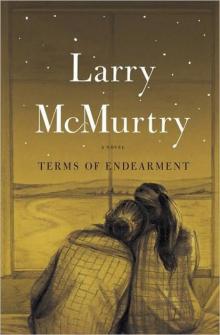 Terms of Endearment
Terms of Endearment Some Can Whistle
Some Can Whistle All My Friends Are Going to Be Strangers
All My Friends Are Going to Be Strangers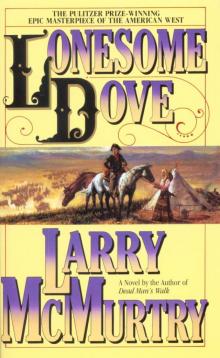 Lonesome Dove
Lonesome Dove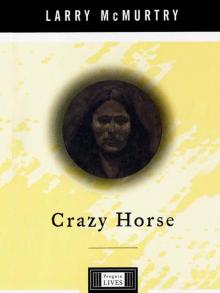 Crazy Horse: A Life
Crazy Horse: A Life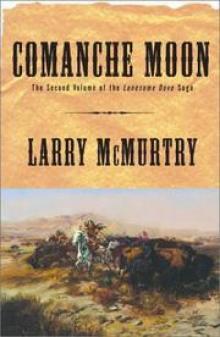 Comanche Moon
Comanche Moon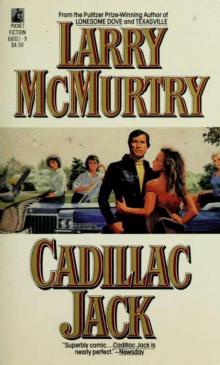 Cadillac Jack
Cadillac Jack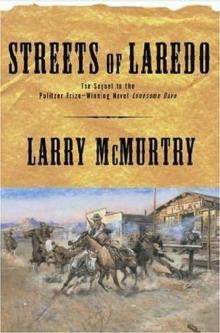 Streets of Laredo
Streets of Laredo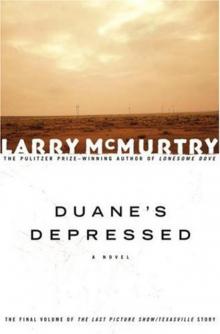 Duane's Depressed
Duane's Depressed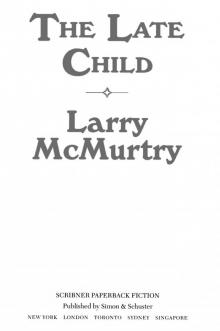 The Late Child
The Late Child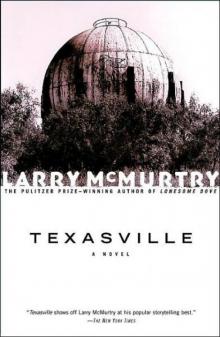 Texasville
Texasville Rhino Ranch
Rhino Ranch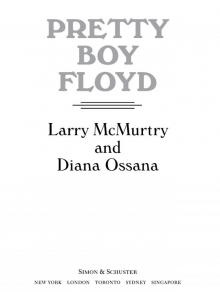 Pretty Boy Floyd
Pretty Boy Floyd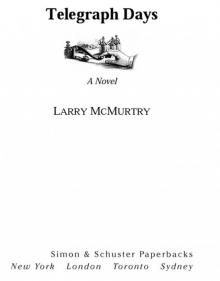 Telegraph Days
Telegraph Days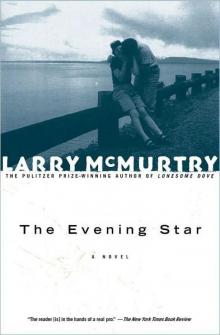 The Evening Star
The Evening Star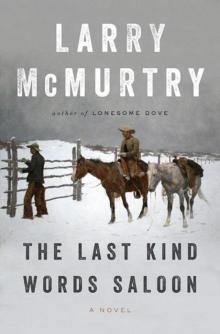 The Last Kind Words Saloon
The Last Kind Words Saloon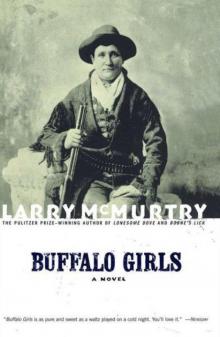 Buffalo Girls
Buffalo Girls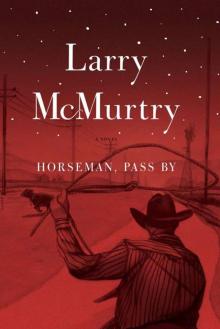 Horseman, Pass By
Horseman, Pass By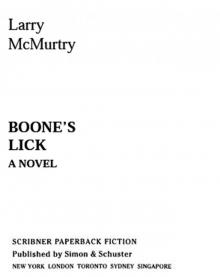 Boone's Lick
Boone's Lick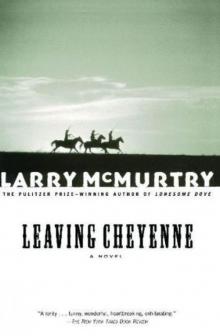 Leaving Cheyenne
Leaving Cheyenne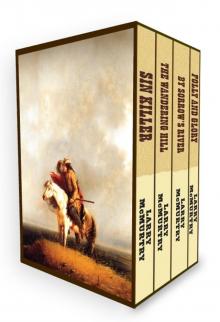 Sin Killer
Sin Killer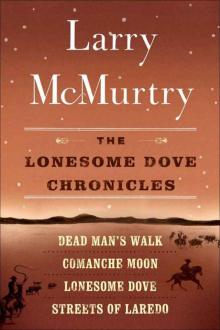 The Lonesome Dove Chronicles (1-4)
The Lonesome Dove Chronicles (1-4)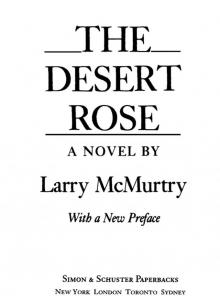 The Desert Rose
The Desert Rose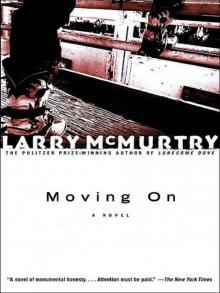 Moving On
Moving On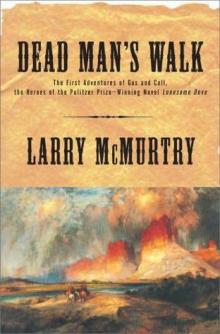 Dead Man's Walk
Dead Man's Walk The Last Picture Show
The Last Picture Show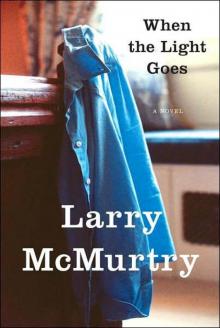 When the Light Goes
When the Light Goes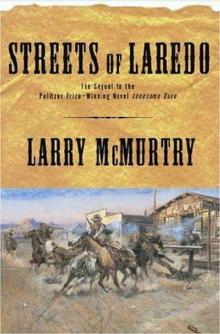 Streets Of Laredo ld-2
Streets Of Laredo ld-2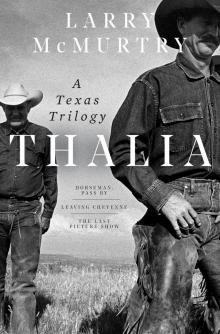 Thalia
Thalia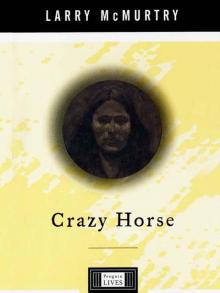 Crazy Horse
Crazy Horse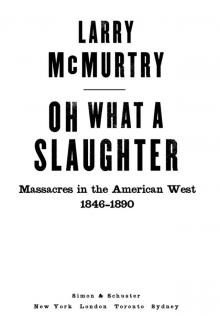 Oh What a Slaughter
Oh What a Slaughter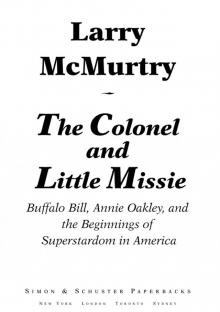 The Colonel and Little Missie
The Colonel and Little Missie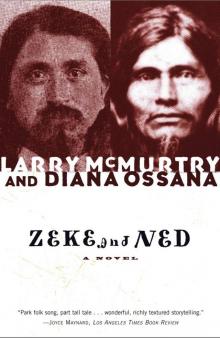 Zeke and Ned
Zeke and Ned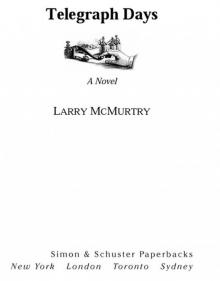 Telegraph Days: A Novel
Telegraph Days: A Novel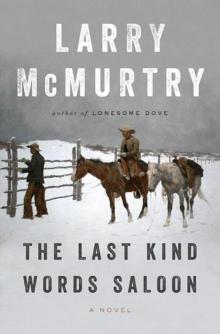 The Last Kind Words Saloon: A Novel
The Last Kind Words Saloon: A Novel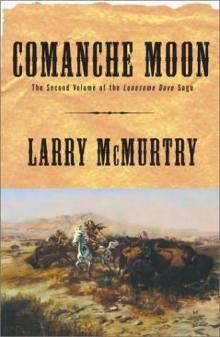 Comanche Moon ld-4
Comanche Moon ld-4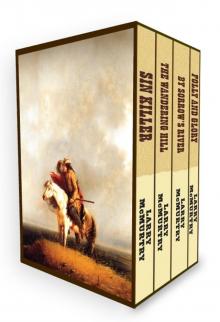 The Berrybender Narratives
The Berrybender Narratives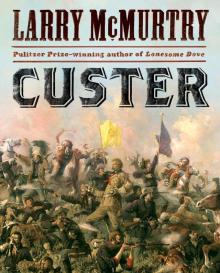 Custer
Custer